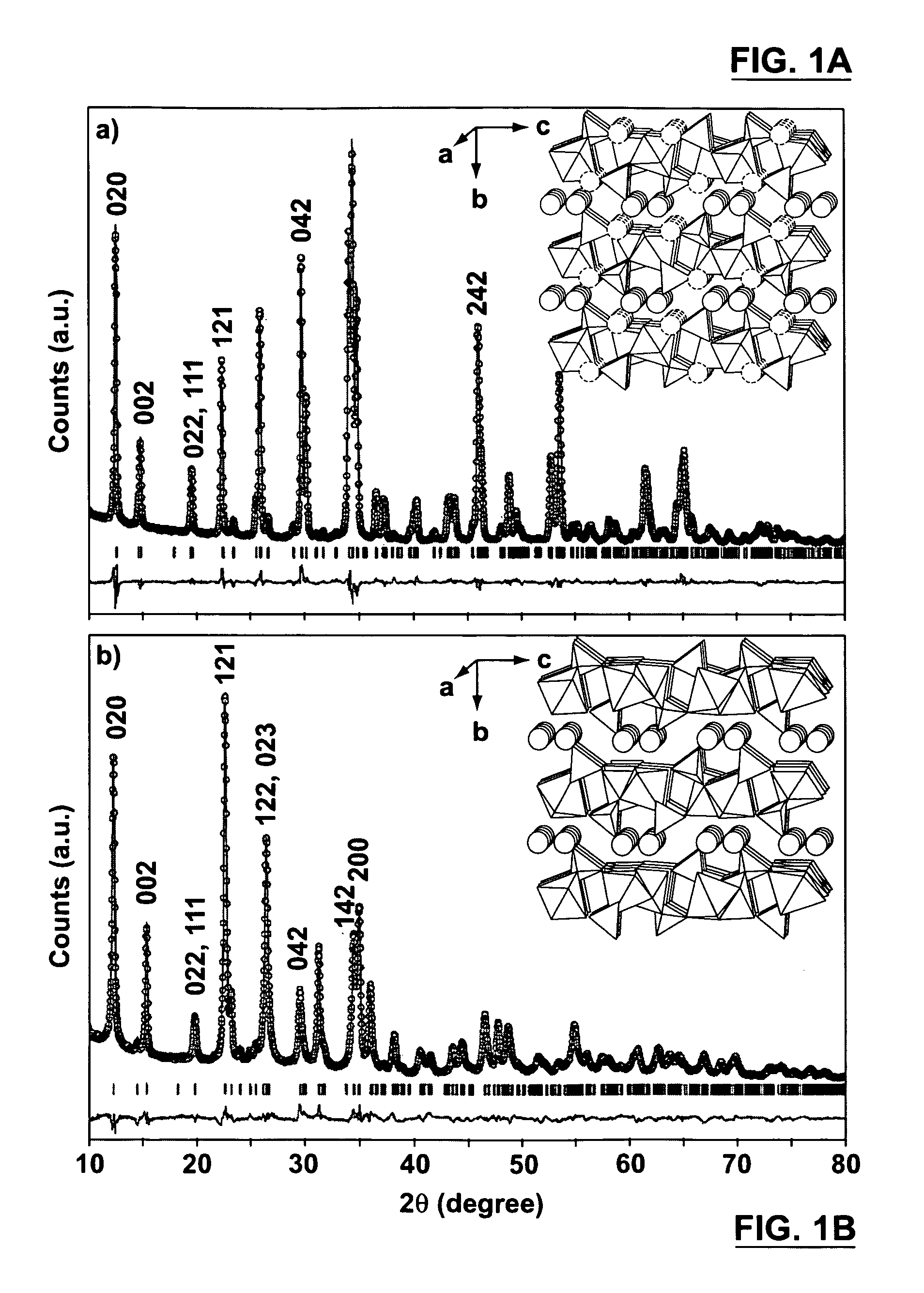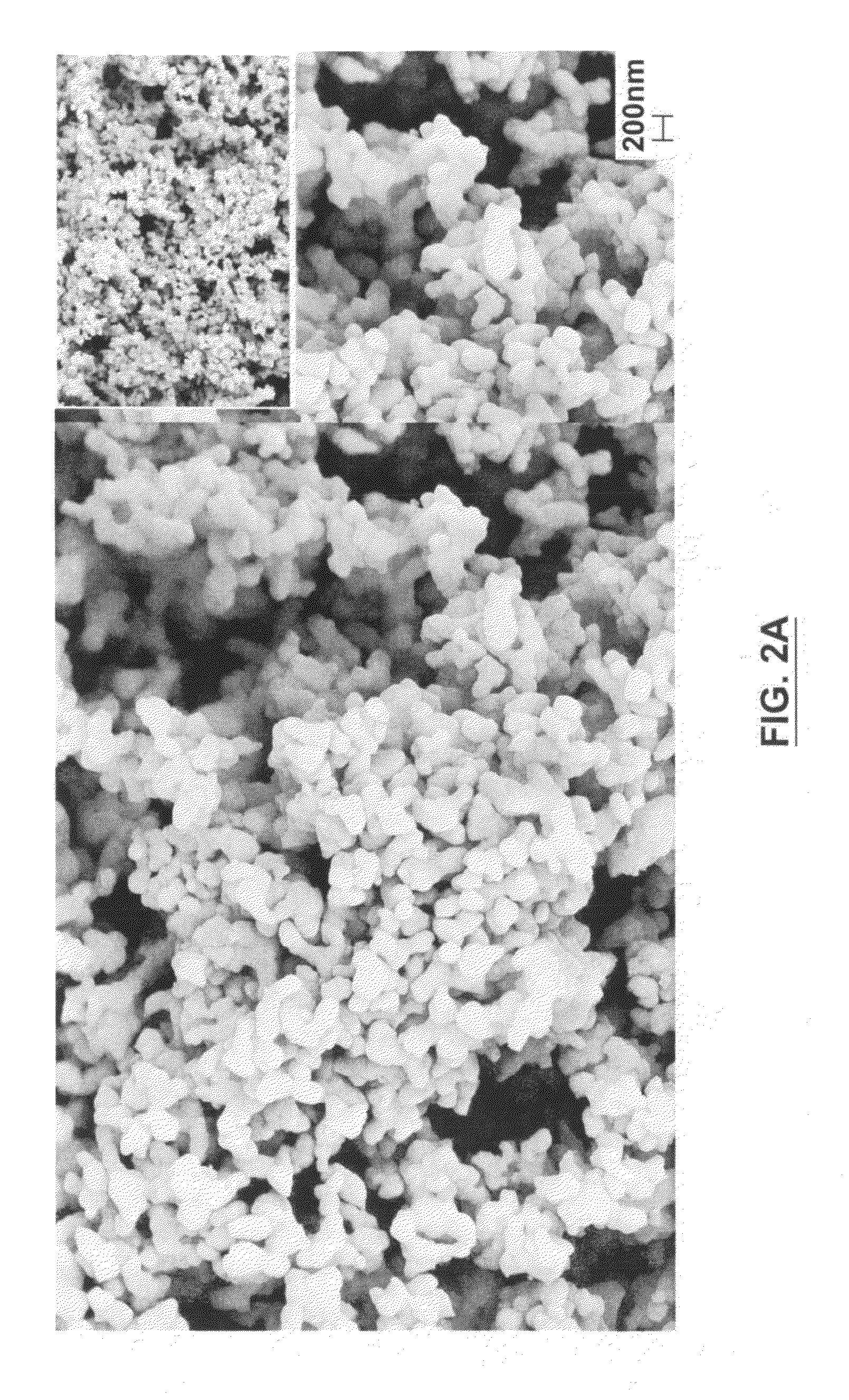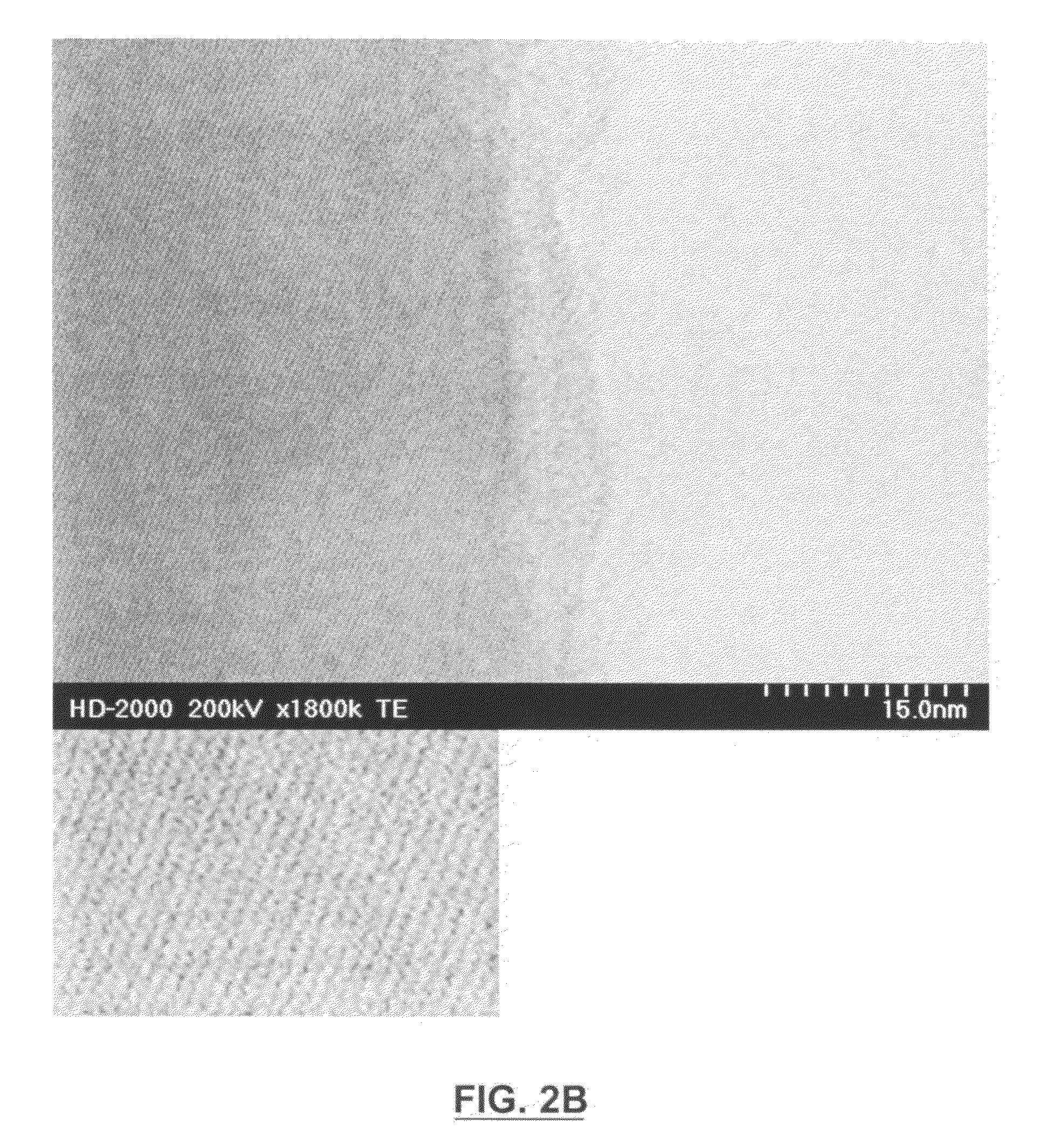Mixed Lithium/Sodium Ion Iron Fluorophosphate Cathodes for Lithium Ion Batteries
a lithium ion battery and iron fluorophosphate technology, applied in the field of batteries, can solve the problems of high cell impedance, overheating, and oxidation of cathode and electrolyte, and achieve the effects of improving the performance of the cathode and the cathode material, and improving the cathode material
- Summary
- Abstract
- Description
- Claims
- Application Information
AI Technical Summary
Benefits of technology
Problems solved by technology
Method used
Image
Examples
example 1
Na2FePO4F Synthesis Via Flux Reaction
[0076]Single crystals of Na2FePO4F were obtained via a flux reaction. The flux utilized in this experiment was sodium fluorophosphite (Na2PO3F). The reaction scheme used to produce single crystals of Na2FePO4F was achieved by dissolving ferrous oxide (FeO) into the flux, summarized as follows:
FeO+Na2PO3F→Na2FePO4F [R1]
[0077]The precursors FeO and Na2PO3F (99+%, Alfa Aesar) were mixed in an agate mortar. The ferrous oxide was initially ground in an agate mortar to ensure a fine powder was mixed with Na2PO3F. The mixed precursors were then poured into a gold crucible and placed in a silica glass tube. The reaction outlined by equation R1 was conducted in a flowing N2-7% H2 atmosphere and the temperature was held at 625° C. for 15 hours. A reducing gas was used to ensure that Fe remained in the 2+ oxidation state. The reaction was cooled slowly, 5° C. every 15 minutes until the temperature reached 600° C., then cooled 10° C. every 15 minutes until ...
example 2
Microcrystalline Na2FePO4F Synthesis Via Solid State Synthesis
[0080]The Na2FePO4F produced via solid-state synthesis was obtained by the following reaction schemes outlined below:
FeC2O4.2H2O+NH4H2PO4+½Na2CO3+3 / 2NaF→Na2FePO4F+3H2O+½H2+NH3+5 / 2CO2+½NaF [R2]
FeC2O4.2H2O+NH4H2PO4+NaHCO3+1.5NaF→Na2FePO4F+3H2O+H2+NH3+5 / 2CO2+½NaF
FeC2O4.2H2O+NaNH4HPO4+1.5NaF→Na2FePO4F+2H2O+H2+NH3+2CO2+½NaF [R3]
FeC2O4.2H2O+NaH2PO4.H2O+1.5NaF→Na2FePO4F+3H2O+H2+2CO2+½NaF
[0081]Chemicals used in each synthesis had the following purity: FeC2O4.2H2O (Aldrich, 99+%), NH4H2PO4 (BDH, 99+%), NaF (Aldrich 99+%), Na2CO3 (BDH, 99+%), NaHCO3 (BDH, 99+%), NaNH4HPO4 (Fisher, 99+%), and NaH2PO4.H2O (Alfa Aesar. 98%). Each sample was prepared by adding the precursors in the stoichiometric amounts outlined above to produce between 1.5 and 2 grams of desired product. The precursor mixture was ball-milled for one hour in acetone at 300 rpm and air dried in a fume hood to remove residual acetone. The mixture was then fired at 300...
example 3
Microcrystalline Na2FePO4F Synthesis Via Solution Synthesis
[0084]This route was based on dissolving precursors into an organic solvent such as ethylene glycol (EG), dimethoxyethane (DME) or ethylene glycol dimethyl ether (EG-DME). The solution was stirred vigorously and the solvent evaporated in either a fumehood or under a heat lamp. The powder produced in DME could not be dried in an oven because iron (II) acetate oxidized to a red product. Therefore, the material produced in DME was stirred until most of the solvent evaporated, and then was dried under a heat lamp for 15 to 20 minutes.
Fe(CH3COO)2+H3PO4+NaCH3COO+1.5NaF→Na2FePO4F+½H2+CH4+3CO2+½NaF
[0085]This was a solution synthesis that was modified from one used to produce carbon coated LiFePO4. Chemicals used in each synthesis had the following purity: Fe(CH3COO)2 (Alfa Aesar, 99+%), NaCH3COO (BDH, 99+%), H3PO4 (Aldrich, 98%), and NaF (Aldrich, 99+%). Once the solvent was removed from the reaction mixture, the powder was ball-mil...
PUM
 Login to View More
Login to View More Abstract
Description
Claims
Application Information
 Login to View More
Login to View More - R&D
- Intellectual Property
- Life Sciences
- Materials
- Tech Scout
- Unparalleled Data Quality
- Higher Quality Content
- 60% Fewer Hallucinations
Browse by: Latest US Patents, China's latest patents, Technical Efficacy Thesaurus, Application Domain, Technology Topic, Popular Technical Reports.
© 2025 PatSnap. All rights reserved.Legal|Privacy policy|Modern Slavery Act Transparency Statement|Sitemap|About US| Contact US: help@patsnap.com



